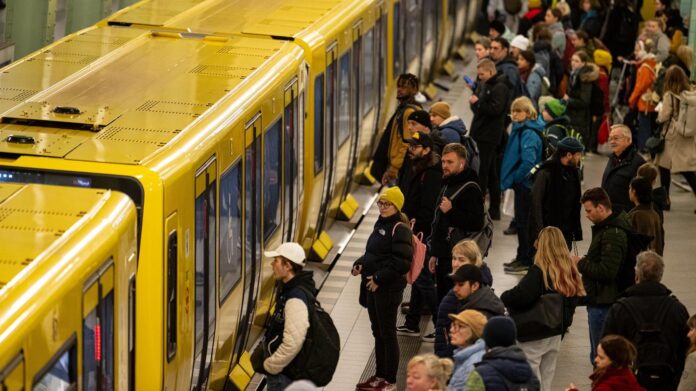
Only the U4 still runs according to schedule: every 20 minutes. Previously, there was a 5-minute interval at times. On all other lines, there have been completely unpredictable disruptions for passengers in recent days, with gaps in the intervals of up to 15 minutes within the city.
According to information from the Tagesspiegel checkpoint, more than 50 drivers reported sick over the weekend – due to a “cold protest against the management”. There is frustration about new duty rosters, less free time, weekend and night shifts, wrote the checkpoint.
The Berlin Transport Company (BVG) partially contradicted this on Monday: It is true that the number of sick days in Berlin is currently increasing. The press office did not confirm the figure of more than 50 people. As an employer, the BVG cannot say anything about the reasons for the sick leave: “We firmly reject wild accusations against our employees that they are not sick at all, but are not fulfilling their employment contract for other reasons.”
56
Trains operated by Berlin’s public transport company were cancelled on Sunday due to staff shortages.
In fact, 69 trains (“circulations”) were cancelled on Sunday. 56 of these cancellations were due to “personnel reasons”, only seven were due to a lack of vehicles, and four trains broke down during operation. There were two “special incidents”. This is evident from internal documents available to the Tagesspiegel. The long U2 line, for example, requires around 20 trains/circulations for weekday operations. In the last week, eleven of these were cancelled in extreme cases.
On Sunday and Monday, only one train ran on the U4. The BVG officially reported via app on Monday that the U4 was “disrupted. Trips cancelled.” From 5:15 a.m. to 5 p.m., the line would “run irregularly.” However, the app did not say that the line would only run every 20 minutes.
There were gaps of up to 30 minutes on the U3 on Sunday. Social media platforms such as X are now collecting photos of BVG advertisements showing waiting times of 15, 20 or 25 minutes – during the day and on weekdays.
Timetable thinning leads to problems
In recent weeks, the BVG had officially thinned out the subway timetable because of a lack of vehicles. At the end of August, a statement spoke of “minor adjustments” on the small-profile lines U1 to U4 and on the U9 after the summer holidays. “The adjustments to vehicle length and frequency will have a positive effect on passengers,” said the BVG.
That didn’t help. After the important U1 line was completely shut down for a long time on Friday, BVG boss Henrik Falk had to explain the situation on the RBB evening news. The new schedule had improved after a not entirely smooth start, said Falk. He spoke of “start-up difficulties”.
The audience waited in vain for an apology from the BVG boss, as Jens Wieseke from the passenger association noted. “The BVG is increasingly becoming a Berlin version of Deutsche Bahn. It must be fundamentally reformed so that it can provide the services that Berliners need,” said Wieseke. The long-time spokesman for the passenger association reminded everyone that this was not the first crisis for the subway; the company has been suffering from a lack of vehicles for years and decades.
Another problem is that there is no clear date as to when the new trains will actually be deployed. In January, a prototype was presented in the presence of the Governing Mayor. The new “J/JK” type trains are intended to replace the aging fleet in the coming years. Initially, only 236 cars for the large profile and 140 cars for the small profile have been firmly ordered, and these should be delivered by 2026.
In January, the BVG announced that there would be test runs with passengers starting this summer. However, this has been postponed because there is currently no delivery plan. According to the BVG, the trains built by Stadler in Pankow have “software problems.”
